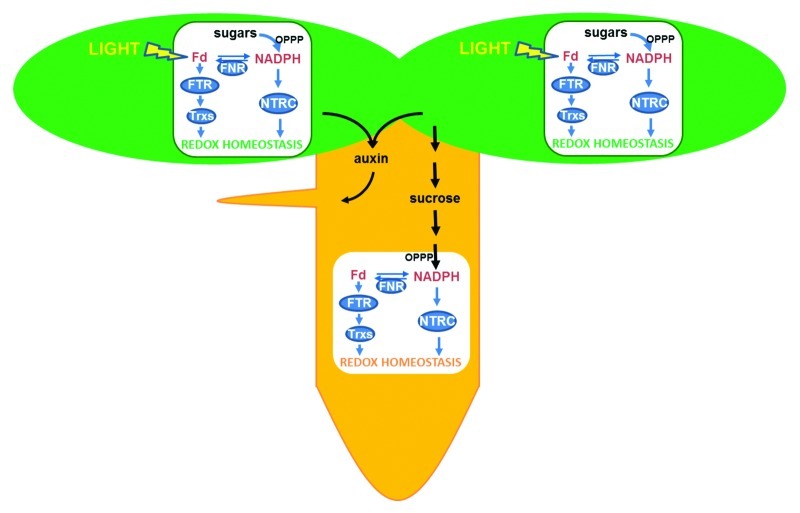Figure 1. Two pathways operate to maintain redox homeostasis in chloroplasts of photosynthetic tissues, the FTR/Trx pathway, which relies directly on light, and the NTRC pathway, which uses NADPH produced either from sugars by the oxidative pentose phosphate pathway (OPPP), or from Fd/FNR. Both pathways may be complementary because FNR activity allows interchange of reduced Fd and NADPH. In plastids of non-photosynthetic tissues the FTR/Trx and NTRC pathways are also present but the only source of reducing power is NADPH produced by the OPPP. The metablolism of both types of plastids is interconnected by nutrients, such as sucrose, produced by photosynthesis in green tissues. Recent results suggest that chloroplast redox homeostasis might be important for auxin synthesis, serving as signal to harmonize the growth of photosynthetic and non-photosynthetic tissues in Arabidopsis seedlings.

An official website of the United States government
Here's how you know
Official websites use .gov
A
.gov website belongs to an official
government organization in the United States.
Secure .gov websites use HTTPS
A lock (
) or https:// means you've safely
connected to the .gov website. Share sensitive
information only on official, secure websites.
